Cadillac guy builds a Shelby “Green Hornet” tribute; just don’t call it a clone
It was a simple plan. When Frank Adubato got the chance to buy his friend’s 1967 Mustang coupe, he saw an opportunity for a fairly modest and quick project. And then things took a turn.
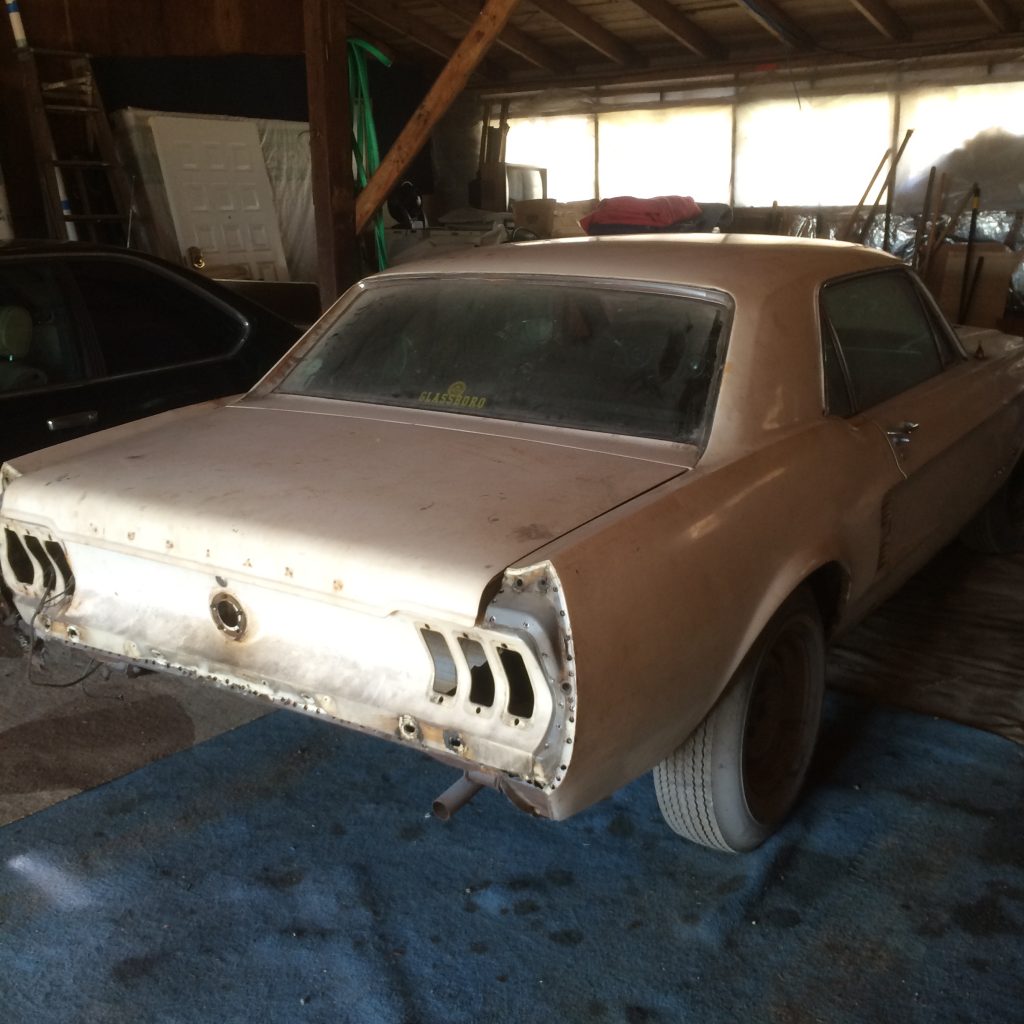
“My original plan was to paint it, rebuild the engine, do some other fix-ups, enjoy it and sell it,” says Adubato, who runs a private aircraft management company in New Jersey. The car’s price was right at $2500. Adubato’s investment ballooned from there, and $125,000 later, he had himself a tribute to a 1968 Shelby EXP 500, better known as the Green Hornet. It was a car he had not even heard of until he began his Mustang project.
Adubato was not looking for a Mustang. The Mustang found him. The pony car had been sitting in his friend’s garage for 25 years, a never-started restoration project. Its body was solid, with just a small patch of rust beneath.
“Then I heard about the Green Hornet, Shelby’s experimental car that Craig Jackson owns,” says Adubato, referencing the renowned auction owner and car collector. “I became very interested, read everything I could about it, and decided to make a tribute car.”
Note that Adubato calls it a “tribute,” not “clone.” There’s no fuel-injected 428 under the hood, despite the “428 Cobra Jet” badges on the fenders and air filter housing. Instead, the car’s original 289-cubic-inch small-block was rebuilt for more bark and bite, now with 320 cubic inches. Adubato wanted to keep the Mustang an easy driver, hence no exotic engine transplant and no attempt to recreate the experimental chassis parts of the original Green Hornet, officially named EXP 500.
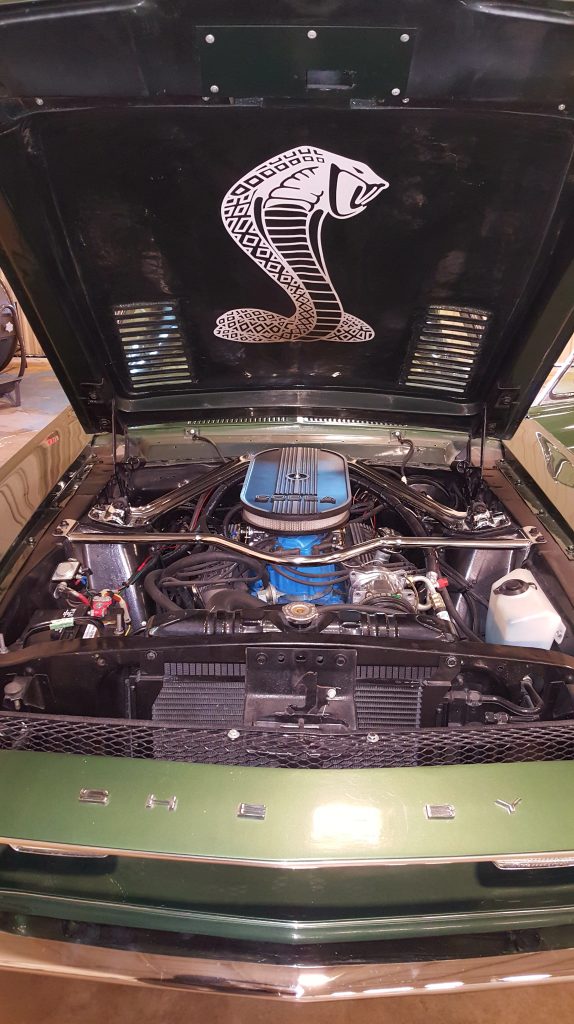
Little Red’s Brother
The original 1968 Shelby EXP 500 started life as a Lime Gold 390 Mustang coupe that Ford sent to Shelby’s shop to serve as a testbed for experimental parts. It had followed a ’67 EXP 500 known as Little Red.
Like Little Red, the ’68 car itself was special to start with, being one of the prototypes for the what eventually emerged as the GT/CS California Special sold in western states. And so, the ’68 car sent to Shelby already had the restyled tail with ’65 Thunderbird lights that Shelby models got for 1968.
Shelby Chief Engineer Fred Goodell replaced the 390 with a 428 CJ-X, an experimental Cobra Jet fitted with Conelec electronic fuel injection. The C6 automatic transmission was upgraded to a stouter truck version. At the rear, Goodell installed an experimental independent suspension that used the Ford 9-inch center section and attached to the existing mounting points. The setup included disc brakes, too.
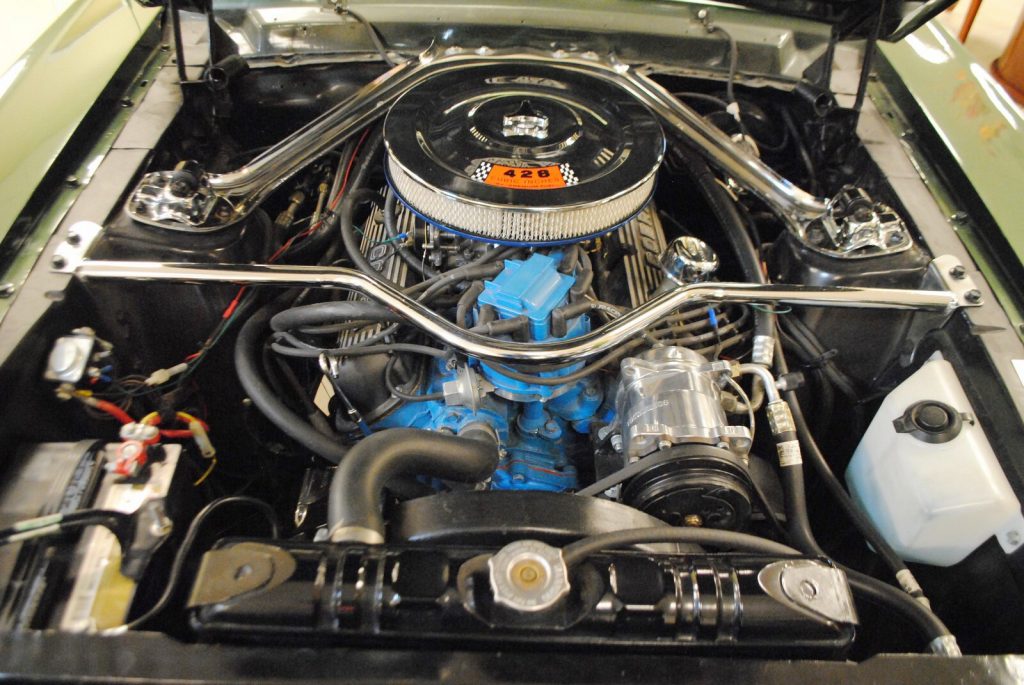
The rest of the car got the full cosmetic Shelby treatment outside and inside, plus a gold-flaked metallic green paint job and spray-on black vinyl roof treatment. The “Green Hornet” nickname was inspired by the crime-fighter TV show that ran for one season in 1966–67, and reportedly suggested to Carroll Shelby by his friend, comedian Bill Cosby.
In Ford tests, the Green Hornet could do 0–60 in under six seconds and exceed 150 mph. Records show that Goodell was still toying with the car in 1970, when he recorded a 14.043-second quarter-mile at 101.35 mph. None of the Green Hornet’s experimental parts made it into Shelby production and were removed before the car was sold to a Ford employee through a company auction in 1971.
Michigan Ford dealer Don Darrow acquired the car six months later, and his son, Randy, commissioned a restoration in the early 1990s. With technical help from Goodell, the resto work included recreating the independent rear suspension and using a Holley fuel injection system. Carroll Shelby was impressed and no doubt quite proud to see the Green Hornet returned to its glory.
The Green Hornet eventually made it into Jackson’s collection. He offered it for auction in 2013, but the high-bid of $1.9M did not meet his reserve. It turned out to be a wise decision. Five years later, he would locate and restore Little Red. Jackson has since had the Green Hornet fully restored to its 1968 condition, including the correct shade of custom green paint.
Cadillac man, Shelby dreams
Until buying his $2500 Mustang and digging into the Green Hornet backstory, Adubato’s interest in collector cars had focused on his two Cadillacs and a BMW. He owns the 1962 Coupe DeVille bought new by his mother-in-law, along with a ’64 convertible that he bought from an employee in 1973 for $400.
Both are in largely original condition, the coupe with 70,000 miles and having been repainted once. The 1964’s interior is all original, with the rarely ordered bucket seats and all factory options. Adubato still drives both Cadillacs in warmer weather, along with a 1983 BMW 633CSi that he bought new and has since restored. He recently got his motorcycle license and cruises the Jersey Shore on a Honda Shadow.
Keeping it simple … sort of
Adubato chose to work with what he had, updating the ’67 Mustang to ’68 Shelby style using an available body kit. He used his own workshop in Toms River, New Jersey, and had his selected builders work there, with employee Jerry Lupo coordinating the project. Bill George handled body work and George Thormann did the paint. The bumpers are new, and the color matches the green from the real Green Hornet’s 1990s restoration.
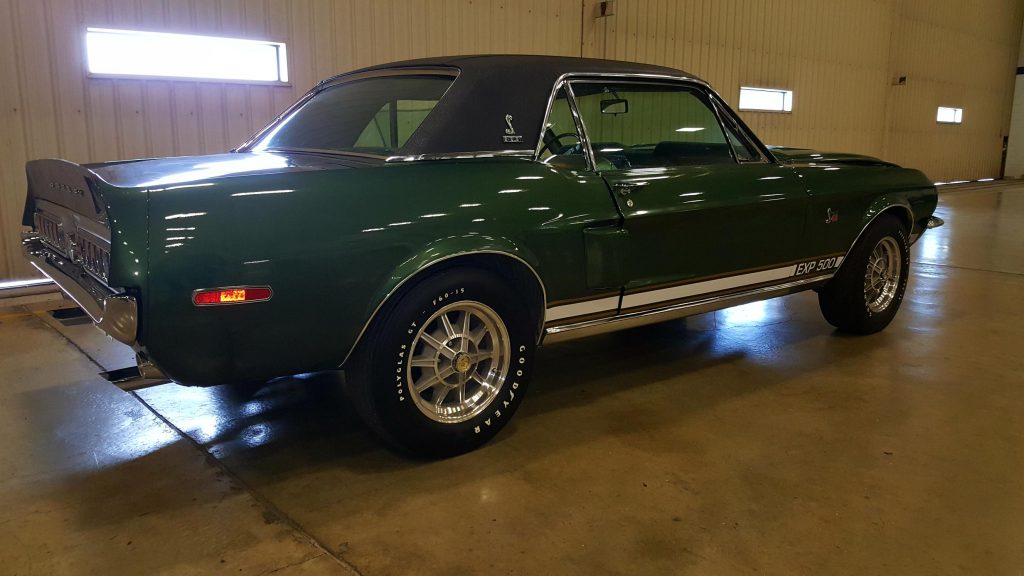
The transformation to Shelby tribute car was more involved than originally anticipated. “It took a long time to get the body parts to fit right,” Adubato admits.
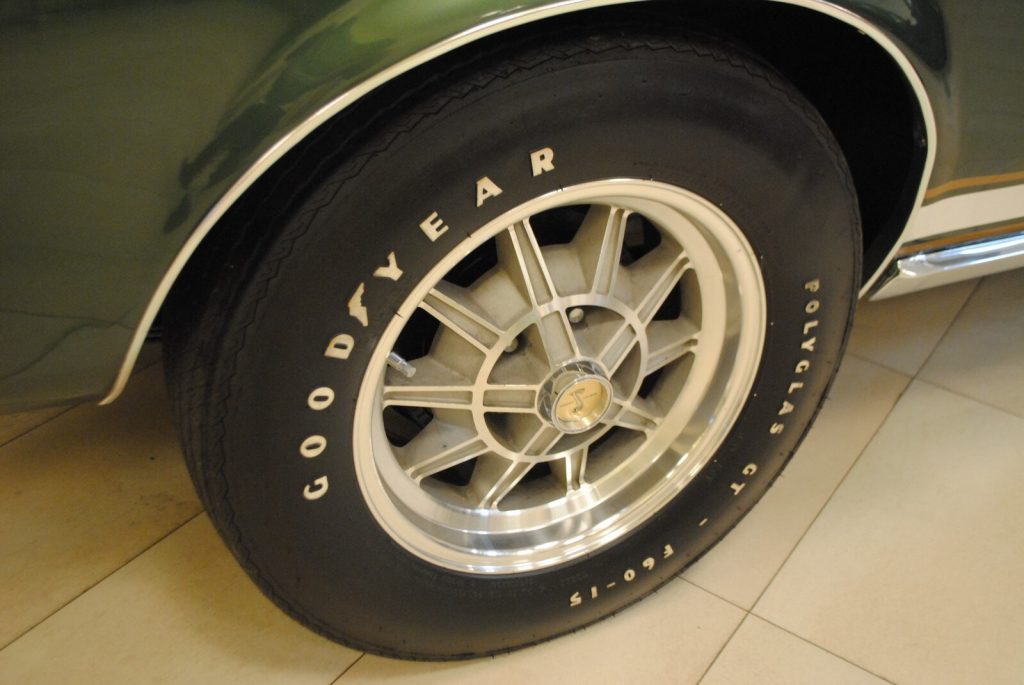
Finding correct Shelby parts was also a challenge. “We could not find a steering wheel, but we found parts of other wheels and made one from them. It’s authentic looking.”
Lupo located a correct set of ’68 front seats in Minnesota. A console from Mustangs Unlimited in Pennsylvania had to be modified to accommodate the automatic transmission. The Lucas driving lights were new, ordered from England.
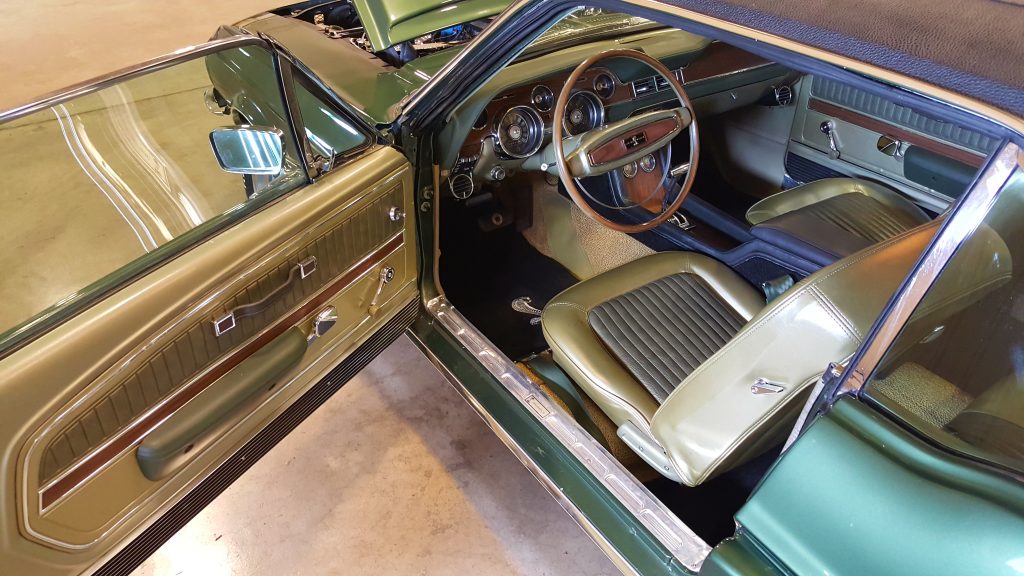
“They had two sets left, and I tried to buy both,” Adubato says. “They only sent one.”
The Green Hornet transformation stopped at the appearance. Adubato wanted his tribute car to remain easy to drive and keep the cost from skyrocketing even further.
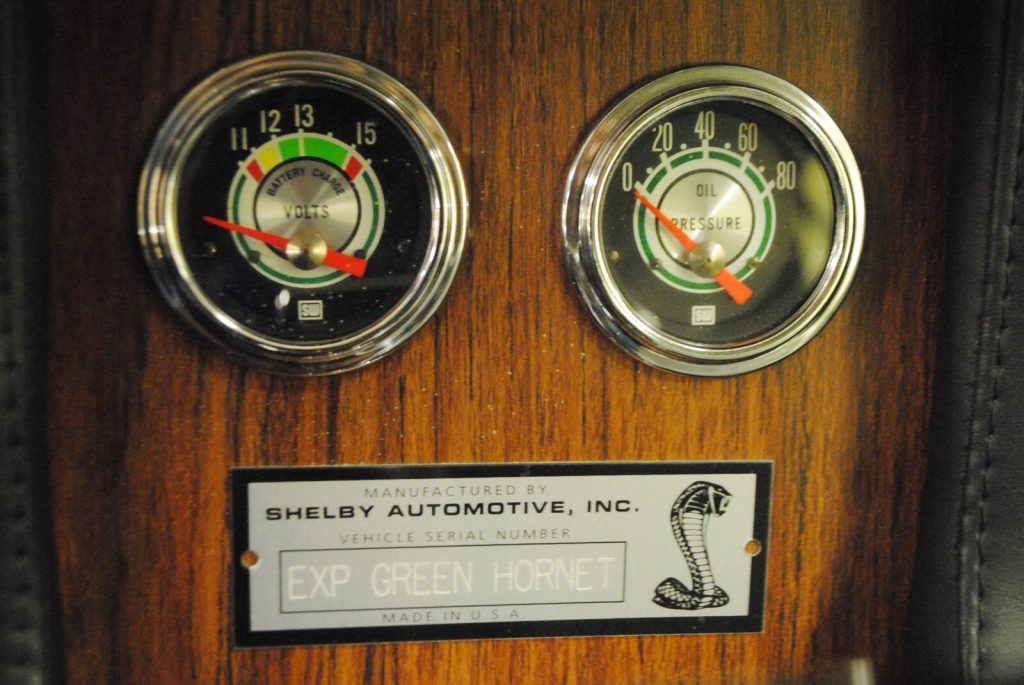
The tweaked small-block teams with the rebuilt original C4 transmission, and the rear is likewise an original part. The ’67 donor car was one of 16 percent of Mustangs to get factory air conditioning, and the system has been replaced with all-new parts, along with the heater, radiator, and other mechanical elements.
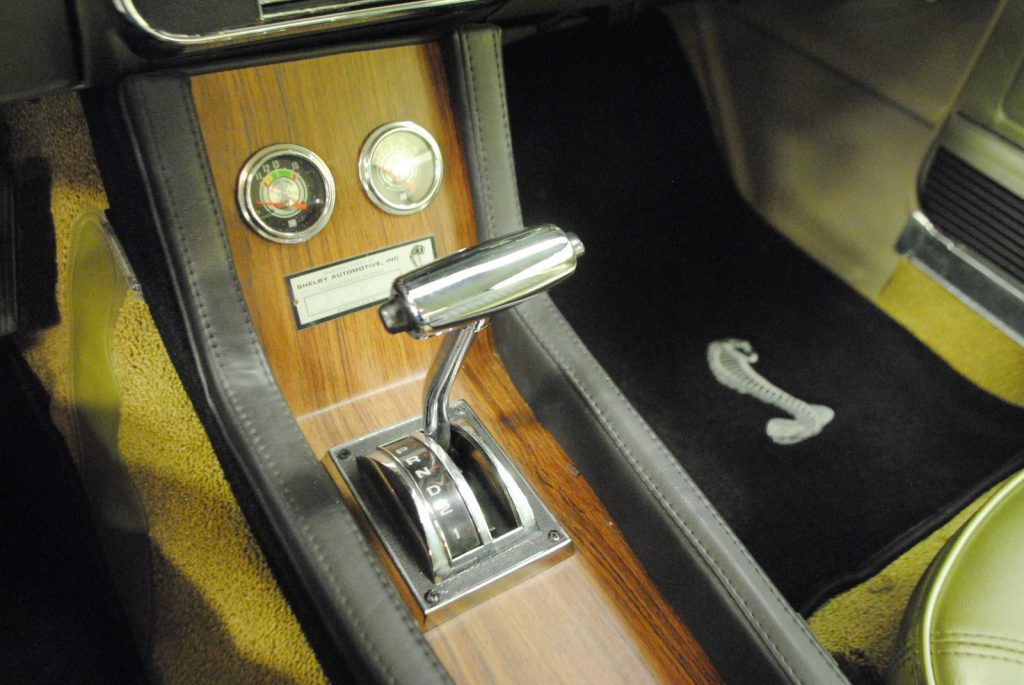
“This could be a show car or driver, or both,” Adubato says.
He acknowledges that his investment was on the high side. (It was enough to buy a real 1968 Shelby.) But he got the Green Hornet tribute car that he wanted, and he has enjoyed all the attention the car receives when he drives it.
If a future owner wants to take this Green Hornet tribute car to full-clone mode, Adubato is fine with that. In the meantime, he’s looking forward to cruising in his Caddys this summer.

